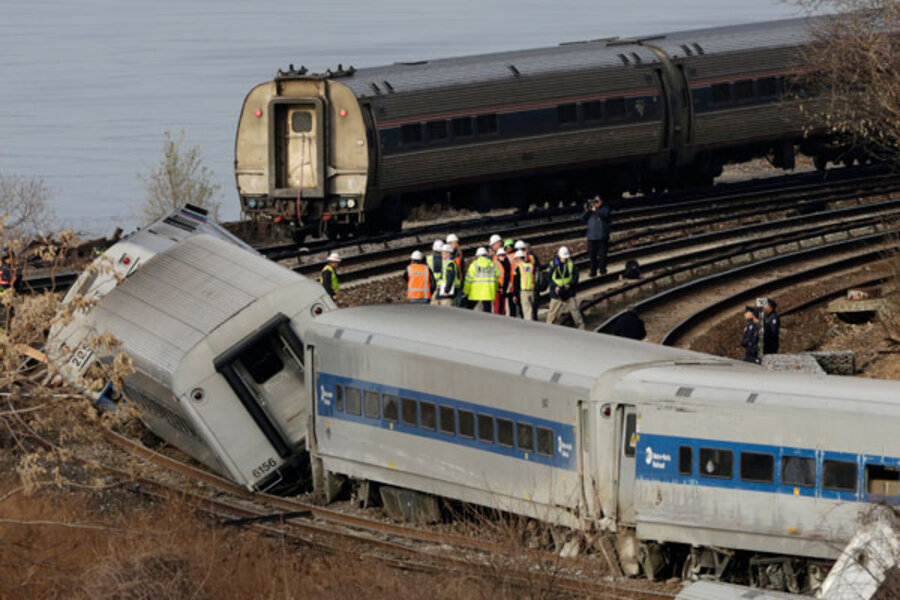Derailed New York train was going 82 m.p.h. in 30 m.p.h. zone, feds say
Loading...
The commuter train that derailed in the Bronx borough of New York early Sunday morning was traveling 82 m.p.h. when it went hurtling off the tracks in an area where the speed limit was 30 m.p.h., said a National Transportation Safety Board official on Monday afternoon.
This discovery is part of an ongoing investigation by the NTSB to find out why seven Metro-North passenger cars and their locomotive veered off track en route from Poughkeepsie, N.Y., to Grand Central Terminal in New York City.
The board’s investigation team used data recorders from the train’s rear-mounted locomotive and front car to help establish a timeline of events, including the train’s speed. Approximately six seconds before the rear engine came to a stop, the throttle went idle. One second later, pressure in the brake pipe dropped to zero, which resulted in max breaking.
It is still too early to know whether it was human or mechanical error that caused the crash, and authorities were not yet sure what caused the throttle to idle or the brake pressure to drop, said Earl Weener, an NTSB member during Monday’s press conference.
On Monday, the NTSB began to interview the train’s engineer and plans to speak with three other crew members during the next few days.
The train’s engineer, William Rockefeller, was injured and "is totally traumatized by everything that has happened," said Anthony Bottalico, executive director of the rail employees union, according to the Associated Press.
Sunday’s accident is the second on the Metro-North line in six months and occurred about 2,000 feet from where the previous crash happened. In July, a CSX freight train carrying tons of garbage derailed. The Metropolitan Transportation Authority (MTA), owned by the state of New York, runs the Metro-North commuter rail.
The two crash sites both lie along a curve in the train tracks where the Hudson and Harlem rivers meet in the Bronx near Spuyten Duyvil station. The MTA considers this area to be a “slow zone” because of two tight curves that come in quick succession. In the area, the speed limit drops to 30 m.p.h., compared with 70 m.p.h. for the track well ahead of the curves, said Mr. Weener.
The wreck in the Bronx came two years before the federal government's deadline for Metro-North and other railroads to install automatic-slowdown technology designed to prevent catastrophic accidents, the AP reported. But with the cause of Sunday's wreck unknown, it was not clear whether the technology would have made a difference.
As the investigation continues, the rail cars and locomotive, which were repositioned onto tracks early Monday morning, will be moved to a secure location for more detailed study, according to the NTSB.
The deaths of four passengers in Sunday's derailment are the first in an accident in the MTA’s 31-year history. The Metro-North train was half-full at the time of the crash and was carrying approximately 150 passengers when the incident occurred.








